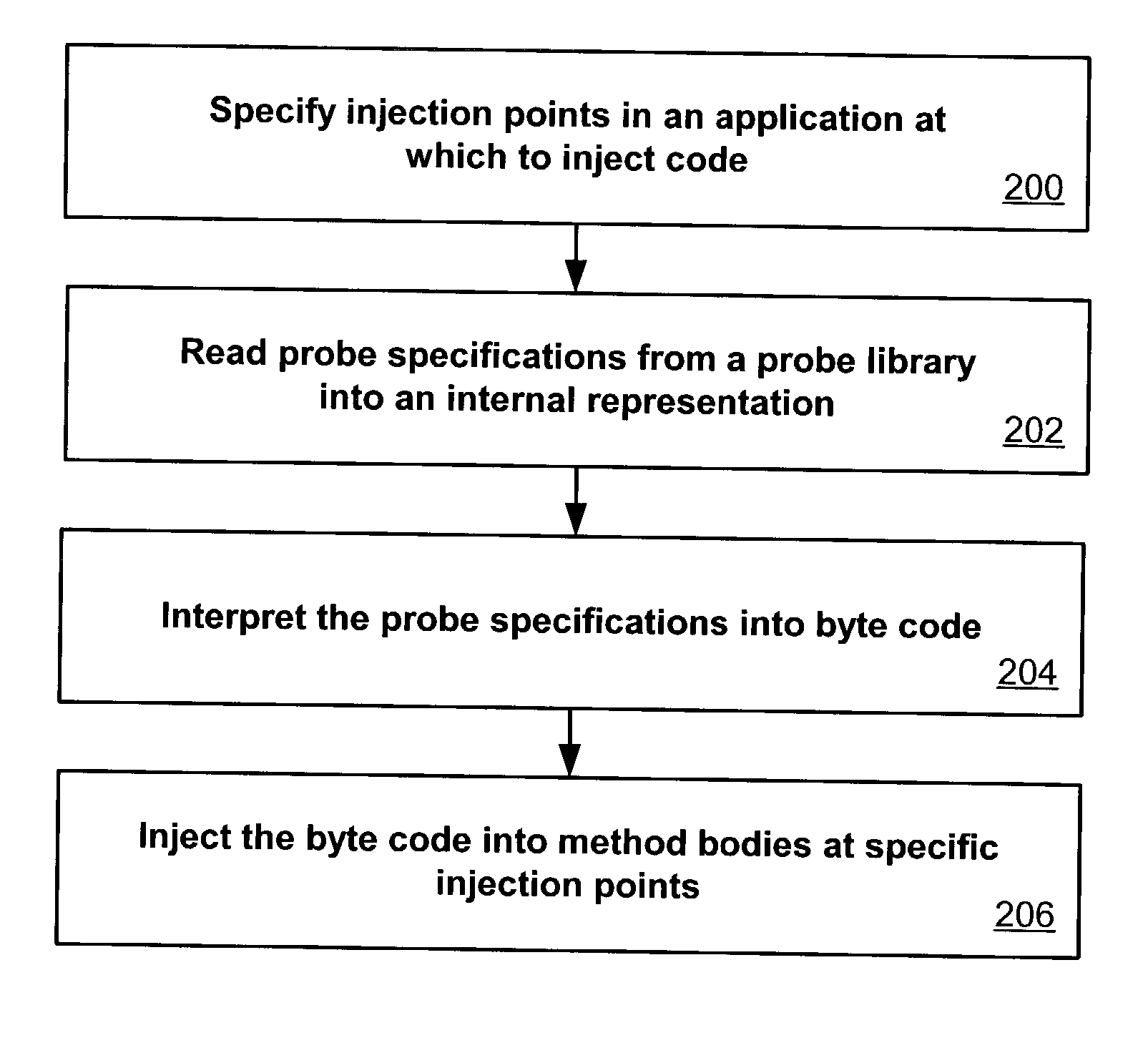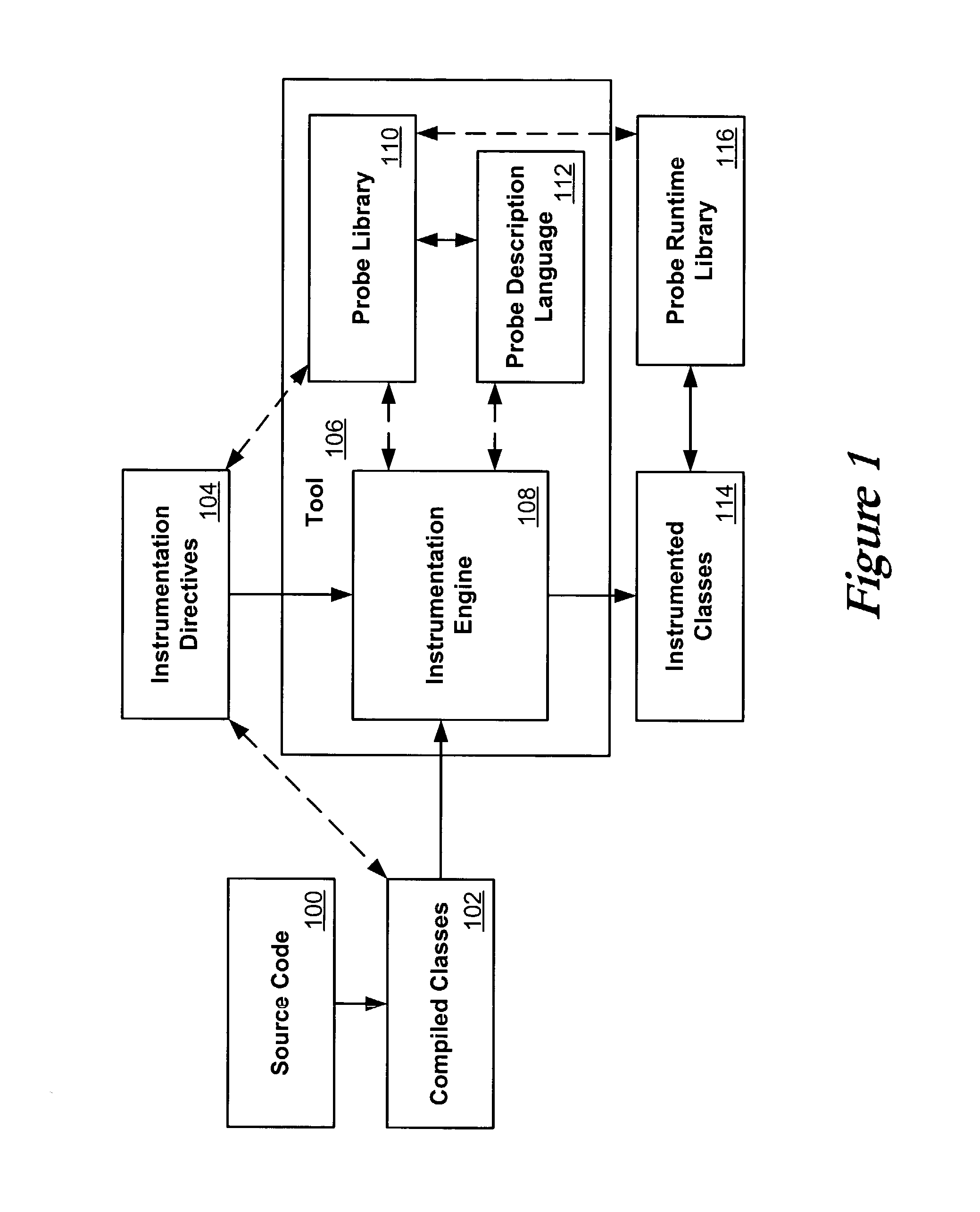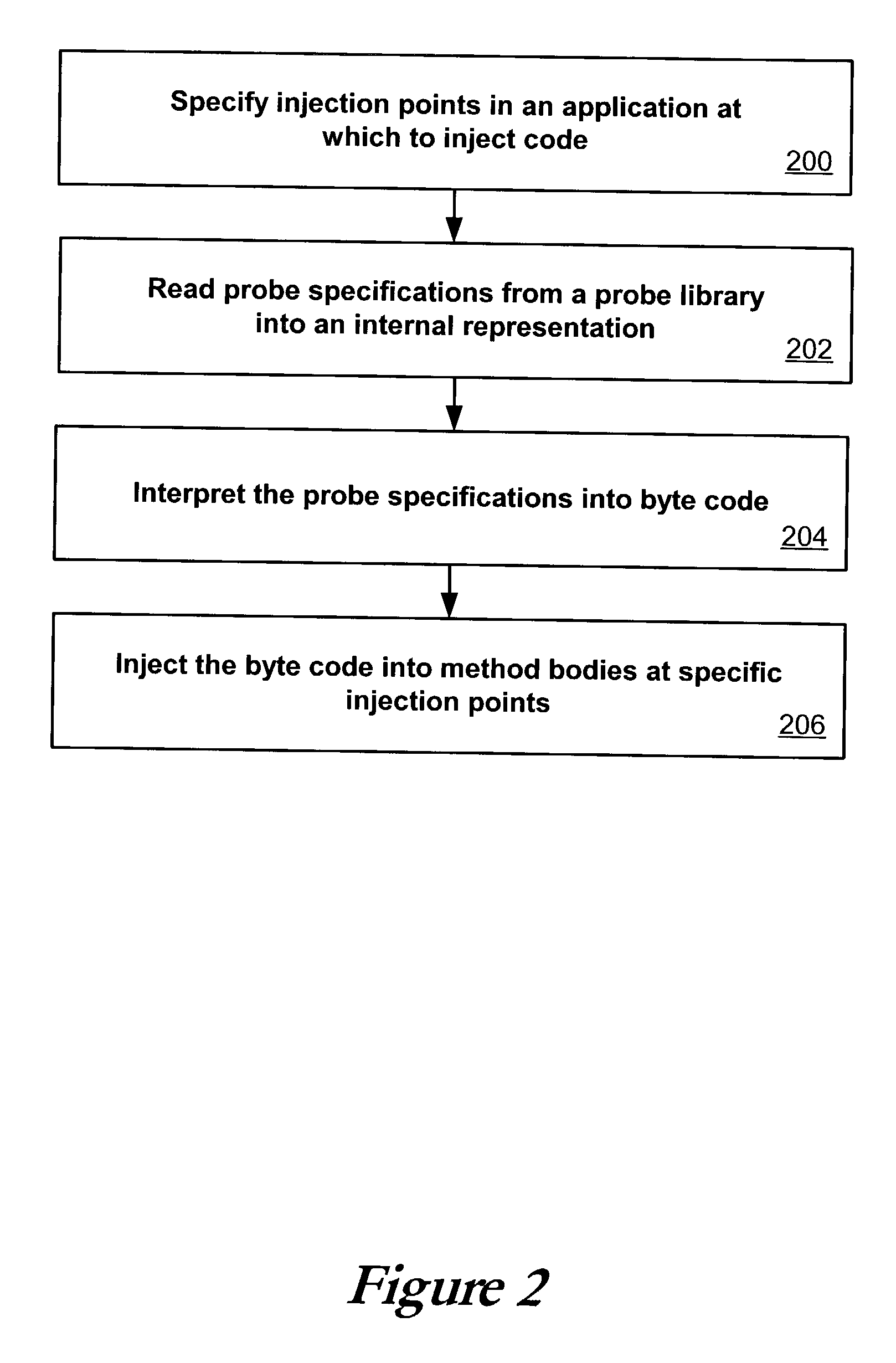Flexible and extensible java bytecode instrumentation system
a bytecode instrumentation system and flexible technology, applied in the field of compiled java applications, can solve the problems of not always practical to use a debugger, source code can become cluttered with debug logic, and the debugging code cannot be changed,
- Summary
- Abstract
- Description
- Claims
- Application Information
AI Technical Summary
Benefits of technology
Problems solved by technology
Method used
Image
Examples
Embodiment Construction
[0133] t0=java.lang.System.currentTimeMillis( );
[0134] java.lang.System.out.printin("Elapsed Time:"+(java.lang.System.curr-entTimeMillis( )-t0));
[0135] In some embodiments, variables can be declared only in %oninit and %onentry sections. Variables declared in an %oninit section can be implicitly static, and variables declared in an %onentry section can be created on a stack. It is also possible to not have any sections in a probe body. Such a probe can be treated as an empty probe. Access to variables from an application being instrumented can be required to satisfy normal Java scoping and access rules. Since the scope of a probe can be implicitly identified by analyzing the probe body, it may not be necessary to track the scope of a probe in the PDL syntax.
[0136] Interface
[0137] Instead of creating a directive file by hand, or creating an XML file directly, a user interface can be supplied which will help a user to generate a directive file. This can further lower the amount of kno...
PUM
 Login to View More
Login to View More Abstract
Description
Claims
Application Information
 Login to View More
Login to View More - R&D
- Intellectual Property
- Life Sciences
- Materials
- Tech Scout
- Unparalleled Data Quality
- Higher Quality Content
- 60% Fewer Hallucinations
Browse by: Latest US Patents, China's latest patents, Technical Efficacy Thesaurus, Application Domain, Technology Topic, Popular Technical Reports.
© 2025 PatSnap. All rights reserved.Legal|Privacy policy|Modern Slavery Act Transparency Statement|Sitemap|About US| Contact US: help@patsnap.com



